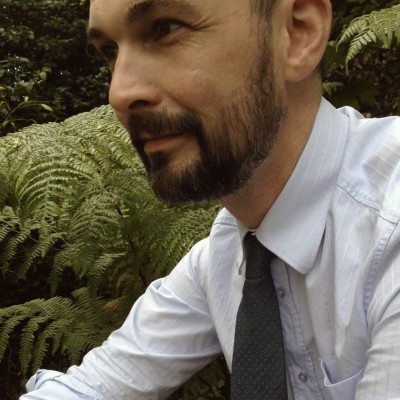
Back and backward, why, wide and wider. Such that art is inseparable from the search for reality.
–Lyn Hejinian, My Life
The rhythms are circadian and the objects elemental. Each entrance is a re-entrance, each hushed utterance a way to say: Again? Again, into one’s lived space, one’s climate. “When you work on a book without writing, you are attaching pieces of clear tape to everything and hoping that in their accumulation, the particles of dust and the stray hairs and fingerprints trapped under the adhesive will eventually arrive at a consistency from which you painstakingly construct a code to decode or to demonstrate.” In one code (or call it constellation, call it tableau): a stream binds a grove of pine standing dead. Beneath their canopy, ziggurats of sawdust, heaps of chunked tile. Fog or exhaust, expired by the guests (ghosts) of this scene, wends its way through to an interior. There, the weather report, on repeat, settles upon each surface. “In other rain: bicycle tires and fiddleheads, and another person to love, that is, already you, again, but when?”
You is always, already, there, snaking back into each lag of information. How to compose amid, and out of, the milieus of you: it becomes an imperative, a question, always questioned. Of works, of days. Of these themes in variation. Of the text inscribed in every sensing. Through what, to what degrees? It is, again, back and backward, the perpetual process, why, to expand the frame of one’s composition, wide and wider. “Without you else is else, without an or or a what.”
What carries one to this book, through its mesh of language. What materials and what techniques transfigure or update one’s ability to compose? The codes of an individual perceiver, the singular writer and reader, are reverse-engineered here to figure in a multitude who simultaneously compose. “Of being numerous,” from George Oppen, is one refrain that begins to disrupt the myth of the self-contained creator. Then there’s Bern Porter, the way his books of poems absorb his era’s medial language – its adverts, reports, billboards, and documents. They renovate the conception of poetic composition, and are another impress embedded within the system of Listing. (How this title and the work’s swarm of voices channeled through the poet intone Rimbaud’s “Solde”: “Les Voix reconstitutes; l’éveil fraternel de toutes les énergies chorales et orchestrales et leurs applications instantanées, l’occasion, unique, de dégager nos sens!”) Hejinian, again, in her transitive poetics, provides a map to guide us to and through this work. In The Language of Inquiry, she explores how “ideas and, perhaps more startlingly, emotions are freed from the limits of the singular ‘I,’ allowing for a poetry of complex and densely layered affect as well as intelligence.” Hejinian’s is a poetics that never overlooks the flow of contexts through which language perpetually moves, that never forgets the many to which any conception of an I is always fused.
This is how I root, or route, my own sense of multivocalic composition in poetic work. Here, I concern myself more with those poets who take seriously what it means to capture and to intone numerous subjectivities and the forms of language related to those positions. I am less interested in a poetry that assumes a polyvocalic register so as to perform a crack-up or to mourn the supposed loss of a stoic, singular entity of the self who, from one’s innermost depths, utters forth. (For example: T.S. Eliot’s melodramatic “These fragments I have shored against my ruins.”) When attending to the language of others in poetic work, there are certain responsibilities, or ways to document transgressions of those responsibilities, that are far more provocative than such affectations. There are ways to explore how one relates to others in and through language, and what it means to think collectively in all of that activity’s rhythms, dissonances and occasional tunings.
I understand the concept of the poet as a receiver, the poet as a media through whom language moves and is redeployed, to be at once ancient and new. From the rhapsodes of the eastern Mediterranean and the poetic curricula of Welsh and Celtic bards, to today’s post-Conceptual and documentative practices, the poet is one who is infiltrated by language, permeated with its forms. The poet is one who is charged with language’s sounds and significations. The poem, then, is always some map of a poet’s navigation amid this sensorium. The poem is always emergent from and contingent to this sensorium while simultaneously reimagining it, reconstituting its elements, its textures. The poets I care about most situate their practices with regard to this sensorium, its multitudes and ecologies; they make it fundamental to the conception of the work. This is what lures me into Listing, its posts and palimpsests, its consistencies of fingerprints and dust. The poet’s dedication to the voices and materials of this work, his sustained inquisition of how to live and how to relate, is what keeps me in its midst.
+
PDF.
Originally published in Listing, Decoupage, 2015.